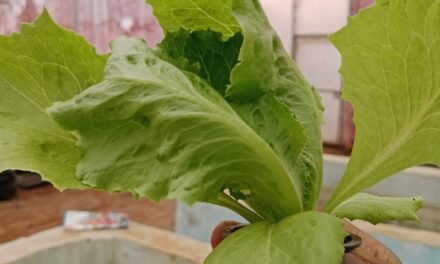At Vigyan Ashram’s Entrepreneurship training program, a woman is engaged in the business of producing dishwashing liquid. She is facing challenges with the low viscosity of the liquid and the inability to maintain fragrance for an extended period. To address these issues, the aim is to establish a standard procedure for preparing a high-quality dishwashing liquid.
Objective:
The objective is to establish a standard operating procedure for the preparation of dishwashing liquid, focusing on:
- Maintaining the viscosity of the dishwashing liquid.
- Increasing the longevity of the fragrance.
Materials required for Dishwashing liquid:
- Linear alkyl benzene sulphonic acid (LABSA)
- Sodium hydroxide (NaOH)
- Fragrance (lemon)
- Yellow colorant
- Cocamidopropyl betaine (CABP)
- Distilled water or RO water
- Plastic beaker
- Stirrer
- Gloves
- Weighing balance
Procedure for 1-liter Dishwashing Liquid:
- Take a plastic beaker with a capacity of 1000 ml.
- Add 12.5 gm of Sodium Hydroxide (NaOH) to the beaker.
- Add 400 ml of RO water and mix well until completely dissolved.
- Slowly add 94 gm of Linear alkyl benzene sulphonic acid (LABSA) with slow agitation for 10 to 15 minutes until a clear solution is obtained.
- Add 0.5 gm of colorant and 1 gm of essence. Check pH.
- To enhance the fragrance’s lifespan, add 0.5 gm of table salt dissolved in 10 ml of water to the solution.
- Add the remaining water to make the volume up to 1000 ml.
- Adjust the pH to 8 to 10 using pH paper. If the pH is acidic, add NaOH; if basic, add LABSA.
- Adjust viscosity by adding Cocamidopropyl betaine (CABP).
What is Linear alkyl benzene sulphonic acid (LABSA)?
LABSA is a mixture of benzene sulphonic acids containing linear alkyl chains of various lengths. It is a significant ingredient in the manufacturing of washing, detergent, and cleaning products. LABSA is highly soluble in water, making it an effective cleaning agent with strong stain removal capabilities.
Sodium Hydroxide (NaOH):
Sodium Hydroxide is used in drain cleaners to convert fats and grease into soap, which dissolves in water, facilitating pipe cleaning.
Cocamidopropyl betaine (CAPB):
CAPB, derived from coconut oil, is a surfactant used in personal care products, household cleaners, and laundry detergents for its cleaning properties.
Advantages of liquid dishwashing:
- Reduces the exchange of germs as it doesn’t involve direct contact.
- Convenient to use with dispensers.
- Creates a richer lather compared to bar soap.
- Has a lower pH, making it gentler on sensitive skin.
- Retains more of the skin’s natural moisture, suitable for dry skin.
Establishing a standard procedure for dishwashing liquid production ensures consistent quality and addresses issues related to viscosity and fragrance longevity, enhancing the product’s effectiveness and appeal to consumers.





